-
Posts
692 -
Joined
-
Last visited
-
Days Won
1
Content Type
Profiles
Forums
Blogs
Gallery
Events
Store
Posts posted by Sal
-
-
Badge reverse
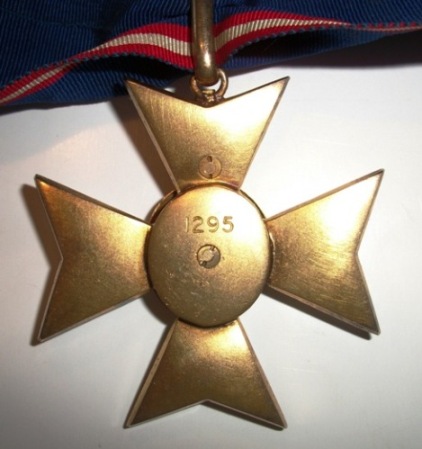 0
0 -
number is 1295
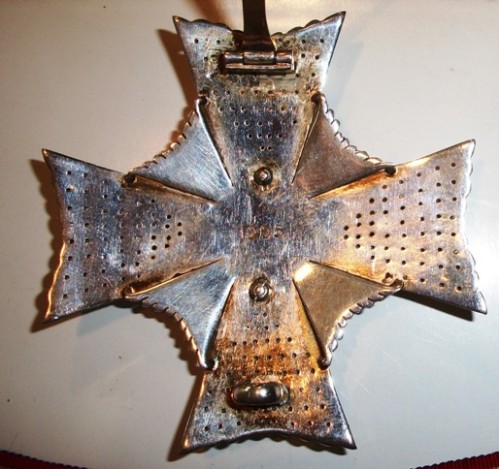 0
0 -
Just received this KCVO and when comparing to my earlier MVO I see the numbering style is more contemporary looking. Is it possible to date the period of manufacture or award based on the crown on the obverse top of the badge? I notice a difference in the various eras of DSO and am curious if it is possible to date the badge based on the engraving of the number or the crown motiff. I know they are king's crowns but not sure if there are variations in design over the years.
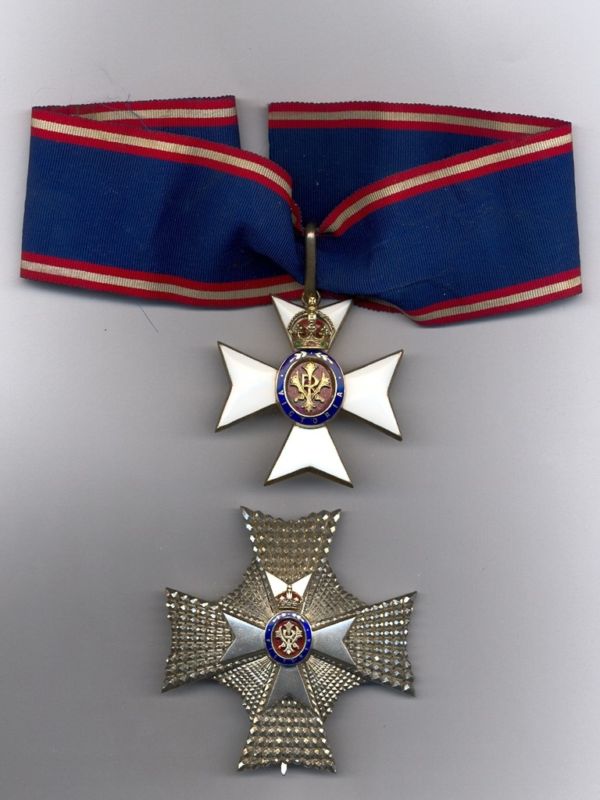 0
0 -
Chris,
The formal name is the West Indies Naval Campaign Medal was first authorized in 1901 and was awarded to personnel who were assigned to the fleet of Rear Admiral William T. Sampson (thus Sampson Medal)during the Spanish–American War engaged in combat operations in the waters of the West Indies and Cuba. The medal was issued to members of the Navy and Marine Corps who took part in West Indies naval operations from April 27 to August 14, 1898.
The reverse if each medal had the engagement it was awarded for, the subsequent engagements are noted by the bars affixed to the suspension ribbon. The top bar is the ship the recipient was assigned to in the fleet. There are 3 phases of award. The first is pictured where the main award has the ship bar with subsequent engagements affixed in a chain type ladder. Phase II medals have the top suspension bar with the ship name, and Phase III medals have the top ship bar with engagement clasps afixed to the ribbon as a clasp, much like US WW I Victory Medals or British campaign medals
0 -
Petty Officer appointment
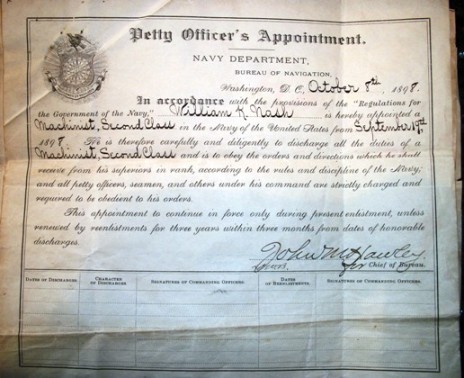 0
0 -
More
http://gmic.co.uk/uploads/monthly_04_2011/post-1625-0-33776600-1302268475.jpghttp://gmic.co.uk/uploads/monthly_04_2011/post-1625-0-08800100-1302268356.jpg
0 -
Finally received the holy grail (for now) of my collection. A beautiful Phase I Sampson USS Marblehead, with Guantanamo engagement bar, impressed to William K. Nash, Machinist 2d Class. The bar is correct for the Phase I Marblehead as Guantanamo was the only Phase I engagement bar. There are also 2 United Spanish War Veteran medals, both numbered with matching mini buttons. What makes it for me are the 4 documents to Nash. 3 appointments, one as an Oiler on USS Dolphin, and the other 2 as a Machinist 2d Class and 1st Class on the Marblehead. The last is a Petty Officer appointment document. The paperwork is key for me make the grouping more than just nice to have, it personalizes the medals with a person.
http://gmic.co.uk/uploads/monthly_04_2011/post-1625-0-06374200-1302268052.jpghttp://gmic.co.uk/uploads/monthly_04_2011/post-1625-0-38064400-1302268281.jpg
0 -
Really spectacular...any details on awardees living? Also, have you ever seen a Type 1 star?
Tony
0 -
Criteria was recently updated to include non wound/bleeding injuries to the head. Under the new rules of the Army, soldiers suffering traumatic brain injuries, such as concussions, during roadside bombings in Iraq and Afghanistan are now eligible to be awarded the Purple Heart.
0 -
Hello All, I just picked this up for $15.99 and would like some options - It looks good, but I am not real familiar with going prices (other than cheap). Thanks Captain Albert

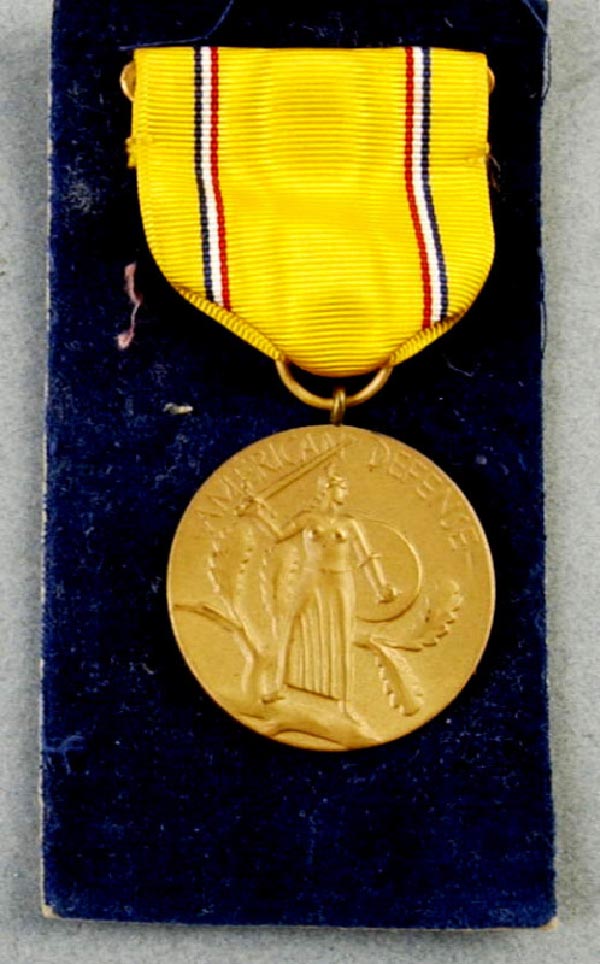
I agree, good deal at 16 bucks. Ring suspension is more valued IF you are a variation collector, if not then it's a matter of just having an example in your collection. 75 seems too high for a ring suspension. They are more scarce that the knob suspension but are not impossible to find. It comes down to what you are willing to pay for the variation. I would not pay more than 35 or 40 for one at the very high end so i think yo got a good deal.
My $.02
Tony
0 -
One more of the central medallion
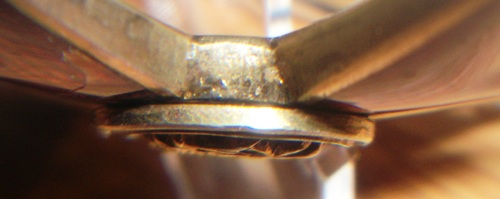 0
0 -
Hi Tony,
please so kind and post better pictures of your Griffin Order...
Regards Seeheld
Hope these work better for you, if not I will email them. Many thanks

 0
0 -
I have one unmarked with rivets and a separate central medallion...am interested in any thoughts from the group. Many thanks
Tony
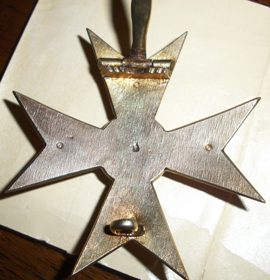
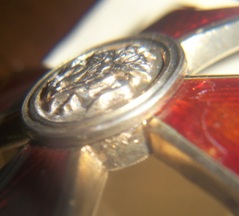 0
0 -
Judging by the pad in the case and the crimp brooch LI-GI marked, I would say the Navy Cross is 70s at least , if not 1980s. I cant tell the SS without the reverse, but I would guess the same.
Tony
0 -
I'm sure there are more but this one jumps out because of the low winning bid with respect to the order
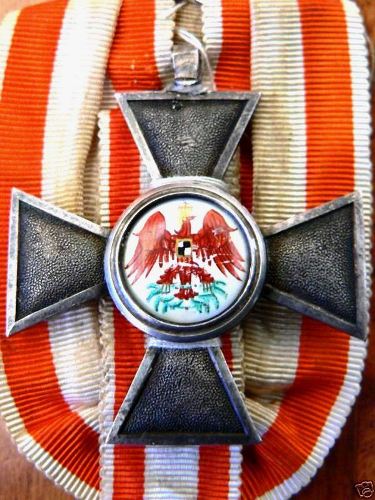 0
0 -
-
stogieman editorial comments:
It's not often in life that one has a great dinner, washes up, sits down to relax with some really good friends and start's to have PLM's passed around the room. I had a wonderful working-meeting with Steve Previtera a few weeks back and of the many subjects we touched on, one was PLM's. I confessed that unlike flight badges, the characteristics of the PLM are just lost in translation/viewing images to me. I'm sorry, I just don't get them; just as I find it impossible to "see" what Rick, Daniel, Paul, et. al. "see" in the rank lists.
After this meeting I don't think there will be too many authenticity questions for me if I am ever fortunate enough to actually hold a real PLM in my (too flabergasted to be sweaty) hands....
As is so often the case in this hobby of ours; there is simply no substitute for handling known originals. Quality simply cannot be duplicated in an image, no matter how well the scan or photo may be. The "feel" of piece cannot be replicated, no matter how clever a fake.
This was one of the most special nights of collecting I have had in a very long time and I am grateful to all the participants. Thank you for your time, your efforts and for sharing your collective experience(s) and knowledge.
PS: Did I mention the ca. 1866 and the ca. 1870 St. Henry RK's I was able to lovingly hold again?
Perfectly stated. The one thing I can't explain to non collectors about this hobby is the experience you describe that you can only get from the personal interaction and sharing with friends. I had the same type experience with my dear friend Allan Henderson at the SOS. He brought some items to the show just so I could see and handle them in person....and it was amazing, like you said, ain't nothing like the real thing baby.
Thanks so much for sharing and reminding us the importance of the hobby beyond the pieces we collect.
Tony
0 -
<a href="http://news.webshots.com/photo/2677624860103172408oVDdEA" target="_blank"><img src="http://inlinethumb23.webshots.com/45462/2677624860103172408S600x600Q85.jpg" border="0" class="linked-image" /></a>
Here is the other Medallion I bought:
Lorenzo
Lorenzo,
Do you recall the name of the medallion? I have the same one in silver with similar mounting stand. Just don't recall the commemoration.
Tony
0 -
-
A few more...
http://gmic.co.uk/uploads/monthly_01_2010/post-1625-126455777918.jpeghttp://gmic.co.uk/uploads/monthly_01_2010/post-1625-126455780373.jpg
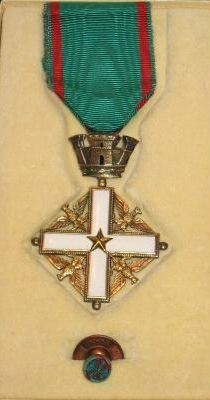 0
0 -
#67 is just OUTSTANDING
0 -
One of my favorites. My Victorian is missing the top bar which is a shame, but a beautiful piece. I am jazzed to see yours with the top suspension bar in tact.
Bravo
Tony
0 -
Not having any luck searching for additional photos but is the unidentified GC Star the Royal Victorian Order? I can't find anything identifying him as receiving it, did find reference to Tower and Sword, but that is not what he is wearing.
Judging by the star portion and the white of the actual cross, as well as the time period, just a stab....
Tony
0 -
Born in Chenango, Texas Sasser was a combat medic in the United States Army during the Vietnam war. He received the medal from President Richard Nixon in March 1969, for his actions of January 10, 1968 in Ding Tuong Province, Republic of Vietnam.
OUTSTANDING!!!! And as with all, their actions in their eyes were not above and beyond...their humility is numbing.
0






KCVO
in Great Britain: Orders, Gallantry, Campaign Medals
Posted · Edited by Sal
Mervyn,
Exactly my dilemma, although I did not notice the difference until I had it in hand and compared the crown to my Victorian DSO...I have no idea why they both have the same number; I thought they might have been brought together and numbered then sold as a set, but I have never seen any grade of the order without a number. I missed the crown difference because I was looking at the numbering which id not look like the numbering I have on my other piece. I'm at a loss because I would expect to see some sign of renumbering if they were coupled from 2 different eras and issued as a set but renumbered 1295. I cannot find any evidence that a previous number was removed and reassigned unless it was done by the jeweler who made the order. I also compared it to my lower grade and in my limited level of expertise, it appears to be a let cross and star......I also would expect to see a "C" preceding the number if it was a awarded as a commander grade of the order.
Any suppositions from you or the collective community?